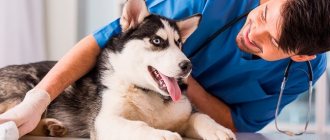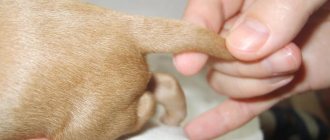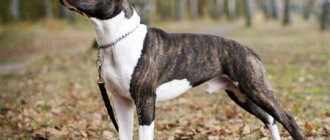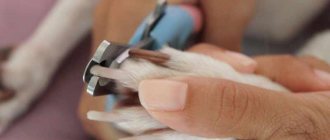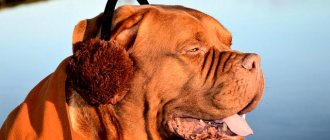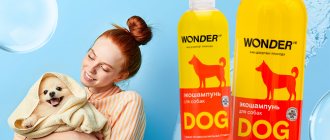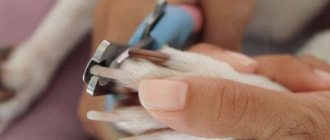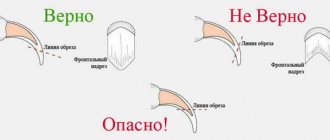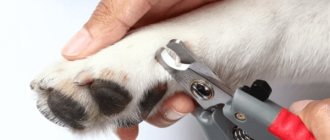The chain of dog salons "Milord" provides washing, drying and grooming services for dogs of various breeds at reasonable prices. It may seem that bathing a dog is a very simple task that even a beginner can handle. But experienced dog breeders, owners of purebred dogs taking part in exhibitions, know how important it is to properly wash their pets.
In order to provide your dog with a well-groomed appearance and healthy skin, it is necessary, depending on the breed, coat characteristics and lifestyle, to correctly select:
- frequency of washing;
- cosmetics;
- tools and methods for drying and styling fur.
It is recommended to carry out water procedures for dogs from once a week (for Yorkies, Maltese, Chinese Cresteds) to once a month (for Fox Terriers, Newfoundlands, etc.). If your pet walks outside, more frequent “baths” will be required. And, of course, you can’t do without it before the exhibition.
Important points
Dogs are fairly clean animals, and in most cases they could do without taking baths.
They do not sweat, they lick themselves, getting rid of dirt and dead hairs. Representatives of a number of breeds have wool that is self-cleaning. But a dog sharing housing with people still needs to wash itself from time to time according to human rules - in the shower, with hygienic cosmetics. Water procedures help the dog get rid of fat, dust, exfoliated scales of the epidermis, and dead hairs of the undercoat that accumulate on its body and coat. It is this “garbage” that turns into a breeding ground for the development of various microorganisms. The animal becomes susceptible to bacterial and fungal infections, and may develop fleas and other parasites. Such prospects are dangerous both for the dogs themselves and for their owners.
Precautionary measures
To prevent bathing from harming your pet’s health, follow these rules:
- Monitor the water carefully. Too hot is unacceptable, but the dog should not freeze while bathing. The optimal temperature is slightly warmer than the dog itself.
- Dry the wool well. Make sure that a wet pet does not end up in a cool or drafty room - thermoregulation in wet dogs is poor, and even in summer rapid hypothermia is possible.
- Try to keep moisture out of your ears. It is better to cover them with cotton wool while washing. An animal will not be able to get rid of water that has gotten into its ears on its own, and this excess moisture can cause inflammation.
Rules for bathing dogs
- The dog is bathed after a walk, not before it. The time period for the water procedure is selected so that the pet has time to dry before the next walk, taking into account that the undercoat of representatives of a number of breeds can remain wet for several hours. Otherwise, your pet risks getting a serious cold, especially in the cold season.
- The dog must be calm. If your dog is overexcited, wait until he calms down, otherwise bath time will turn into a dramatic fight.
- The water for washing the dog should be warm. The optimal temperature for bathing large pets with dense coats is 34-37 °C, for small dogs – 35-38 °C, for “hairless” dogs – 37-39 °C.
- Long-haired or curly-haired pets are recommended to be brushed before bathing. The procedure is repeated after washing.
- Animals should be washed with special zoo shampoos. It is advisable to first wash the product in your hands with a small amount of water and then apply it to the wool.
- Shampoo and conditioner must be rinsed off very carefully, checking to see if any foam remains in nooks and crannies on the dog’s body.
- Dry the dog with a towel, gently touching the fur. There is no need to rub or ruffle your hair.
- If the apartment is cool, you can dry your pet with a hair dryer, choosing a mode with low speed and low speed. The air flow should not be directed towards the dog's face. If you frequently bathe your dog, constant use of a hair dryer is not recommended.
- Many dogs do not like to be bathed, so they should be taught to bathe from puppyhood. But it must be borne in mind that children are more prone to colds than adults. During and after the washing process, special care should be taken to ensure that the dog does not become too cold. The “wash” should be gentle and not accompanied by causing pain to the puppy. After each procedure, he must be rewarded with a treat. Over time, puppies get used to washing, and, having matured, they do it willingly or, in any case, do not panic or rebel.
Features of ablution after a walk
Dogs should not be given a full bath more than once a week. But with paws the situation is different. They get dirty on every walk (and if there is dirt on the street, then their belly gets dirty).
Therefore, paws are washed after each walk. You need to get used to this from early puppyhood.
It is best to place a bowl of water in the hallway before going outside, and upon returning, immediately wash the contaminated parts of the body. It’s not scary if the water is cool - in the summer it will cool your paws. In winter, you should also not use hot liquid, as a sharp change in temperature will cause your pet pain, burning and tingling.
How often should you wash your dog?
No one has been discussing the need to wash a dog for a long time, but the question of the frequency of this procedure causes disagreement not only among animal owners, but also among veterinarians. The main opinions on this matter are as follows:
- It is enough to wash the dog 2-3 times a year;
- the pet needs to be washed no more than once every 6-8 weeks;
- washing should be done once every 2 weeks;
- The dog should be washed as needed.
Supporters of the “moderate line” do not recommend washing the animal frequently unless absolutely necessary, advising bathing a couple of times a year, preferably during the dog’s molting period. They argue for this approach by the fact that due to excessive use of shampoos or soap, the dog’s fur deteriorates, becomes brittle, and dull. The thin layer of fat on the pet's body is constantly washed away, lost, and the skin becomes dry. Cracks and dandruff may appear. In addition, frequent bathing leads to a decrease in the waterproofness of the coat, and the dog becomes prone to colds.
Adherents of regular water treatments consider such arguments to be conservative, having lost their justification with the advent of professional animal hair care products. They believe that the widest selection of special pet shampoos, soaps, and conditioners eliminates traditional concerns.
As a rule, dog owners who believe that bathing an animal is a hygienic procedure are not inclined to “groom” their dogs with enviable consistency. They wash dogs on a schedule recommended by a veterinarian, depending on the breed, environment, and as needed.
There are also owners who like to bathe their pet “for beauty.” Their charges are usually miniature dogs of decorative breeds. But such dogs, unless, of course, they take part in exhibitions, do not need frequent washing. Many of them don’t even have a place to get dirty: they don’t spend much time outside or “walk” in the arms and purses of their owners.
Sometimes your dog needs a therapeutic bath. In this case, the frequency of water procedures is determined by the veterinarian. He also recommends special cleaning products.
Smooth-haired dogs and dogs with coarse hair and dense undercoat, for example, Labradors, do not require frequent washing. Their coat is capable of self-cleaning, and if water procedures are abused, this property can be lost. But a poodle, which has no undercoat, can and should be washed more often than representatives of other breeds, preferably monthly. The Poodle needs regular grooming and should be given a bath before grooming.
A dog of any breed living in an apartment or in an enclosure must be thoroughly washed if it has rolled around in the mud. This is done urgently, even if the dog was bathed the day before.
Prices for washing large breed dogs in the ARTEMONoff salon
| Breed | Washing, drying |
| Afghan Hound | 3000 rub. |
| Bernese Mountain Dog | 3500 rub. |
| Golden Retriever | 2000 rub. |
| Doberman | 2000 rub. |
| Komondor | 5000 rub. |
| Labrador | 2500 rub. |
| Laika Samoyed | 3500 rub. |
| Malamute | 3000 rub. |
| Maremma Abruzzese Sheepdog | 3500 rub. |
| Newfoundland | 4000 rub. |
| Caucasian Shepherd Dog | 3500 rub. |
| Belgian Shepherd | 2300 rub. |
| German Shepherd, Eastern, Australian | 2500 rub. |
| Shepherd dog South Russian | 4000 rub. |
| Rottweiler | 2500 rub. |
| Irish Setter | 2500 rub. |
| Husky | 3000 rub. |
| Chow Chow | 3000 rub. |
View the full price list for washing, trimming, grooming dogs, cats and additional services.
How to wash a dog
To bathe a pet today, special pet shampoos are used, created taking into account the acid-base balance of the animal’s skin - from 6.2 to 7.4 pH (depending on age and breed). “Human” hair washing products (the norm is 4-5.5 pH) should be abandoned. “Universal” laundry soap and soap with a rich aroma will not work either. Such products are too aggressive for dog skin. Its use can cause an allergic reaction in the animal, dermatitis, and lead to eczema. As a last resort, you can use baby soap or shampoo. In this case, you will need to rinse off the foam especially carefully so that an unpleasant coating does not form on the wool.
Specialized stores offer shampoos for various types of dog skin and coat. For soft-haired pets, detergents are recommended that prevent the coat from matting; for hard-haired pets, texturizing shampoos are recommended. For dogs with long, tangling hair, it is convenient to wash them with a product that facilitates subsequent combing. Separate shampoos are sold for puppies and for older pets.
For animals with hair or skin problems, special products are purchased that contain proteins, extracts of wheat, aloe, eucalyptus, and hydrocortisone. Dogs with fleas should be washed with shampoos containing insecticides, but they should not be used on a regular basis.
In the summer, you can wash your dog with shampoo with a UV filter - this will protect his coat from fading. There are even products with a bleaching component, with their help owners get rid of yellowish spots on the coat of their pets. For dogs taking part in exhibitions, you can purchase a tinted shampoo.
When choosing products for hygienic bathing of an animal, give preference to colorless formulations. The tint is evidence that there is a dye in the shampoo, and it can act as an allergen. When buying detergent, you shouldn’t skimp: one container usually lasts a long time. It is better to trust manufacturers with a good reputation, for example, Francodex, Beaphar, Perfect Coat, Iv San Bernard, Bio Groom.
Hygiene products
The veterinary pharmacy and pet store have a wide selection of bath and soap accessories for pets. Special shampoos for dogs match the acidity of the pet’s skin and do not cause a negative reaction from the dog’s body (itching, dandruff, allergies).
When choosing a detergent, you should pay attention to the nature of the coat. For long-haired and short-haired breeds, special formulas have been developed that take into account the peculiarities of the structure of the hair and undercoat.
The range of detergents also includes special shampoos with a therapeutic effect: for dandruff, excessive shedding, itchy skin, and hypersensitivity. They contain medicinal plants and beneficial components, such as lanolin. To combat parasites, shampoos with insecticidal properties are produced.
Shampoos for dogs
In addition to shampoo, conditioners are used for bathing dogs. The products improve the structure of the hair, make it easier to comb long hair, and add shine and silkiness.
Where to wash your dog
In a city apartment, adult dogs are usually bathed in the bathtub. It is convenient to wash puppies and miniature dogs in a basin or even in a sink, if its size allows. For this purpose, you can purchase a special tray or plastic bath-bed at a pet store.
For a large dog, a shower stall is preferable. Here she will be more comfortable than in the bathroom, and it becomes easier for the owner to keep the situation under control. Collapsible dog bathtubs and convenient wash stations are available, but installing them in a standard bathroom can be challenging.
You might be interested
How to properly trim a dog's nails - tools and safety precautions
Trimming and filing nails is one of the hygiene procedures necessary for a dog. As a rule, growing…read more
Stages of tooth change in puppies and related problems
All dog breeds have two types of teeth - molars and milk teeth. Puppies have up to …read more
What is important to know about trimming and which dogs need it?
Each breed of dog requires utmost attention and an individual approach. The trimming procedure is perfect…read more
How to properly wash a dog
You should prepare for bathing your pet in advance. An hour and a half before the procedure, you need to close the windows and turn off the home air conditioner. Remove bathrobes and things that are being dried on the radiator from the bathroom - this property may get wet when the dog shakes himself off. Prepare cotton swabs for the ears, a towel, a terry cloth or sponge, a washcloth, shampoo, and conditioner for rinsing. If the dog is large, a collar may be needed. It will allow you to restrain your pet if it resists the “head wash”.
Place a rubberized mat on the bottom of the bathtub, basin, or shower stall floor to prevent your dog's paws from slipping on the surface. The sink can be covered with cloth. Place a cloth near the bathing area so that the dog does not injure himself by slipping after the procedure.
If you have a long-haired dog, dilute the shampoo and lather it, this will lather your dog evenly. Keep jars of detergents and rinse aids open so you don’t get distracted later. Fill the bathing container with warm water to approximately the animal's knees. Bring your pet into the bathroom and close the door.
- Insert cotton swabs into your dog's ears; they can be coated with Vaseline. There is no need to insert tampons deeply. It is enough that they do not fall out.
- Place the dog in the “pond”, water it with a shower - first the back and neck, then the tail and paws. All wool should be well saturated with water.
- Apply shampoo or foam solution to the dog’s “fur coat” and lather it evenly. If your dog has long hair, rub the detergent in the direction of the hair growth, otherwise it may become tangled.
- Rub the dog's entire body thoroughly, excluding the head. Wipe your face separately with a damp cloth or washcloth (without soap). If there are wrinkles, wipe each one. Wipe your ears only from the outside.
- Rinse off the foam thoroughly with water from the shower. Be especially careful in rinsing your armpits and neck, where shampoo usually accumulates. The detergent is rinsed off until the water running off the wool becomes clear.
- For long-haired dogs, it is advisable to apply conditioner to the damp “fur coat”. It is washed off after 3-5 minutes.
- Wring out the fur and cover the dog's back with a bath towel or microfiber so that the fabric absorbs water.
- Pick up the dog and place him on a dry cloth, keeping in mind that he will immediately begin to shake himself off.
- Take cotton swabs out of your pet's ears, give him a treat and praise him, even if he rebelled.
Representatives of breeds prone to colds should be wrapped up and taken to a warm place without delay. In summer the dog can dry itself, but in winter it is better to dry the coat with a hairdryer.
Drying process
After the bathing procedure is completed, wring out the fur as much as possible with your hands.
Next, remove the dog from the container and let him shake himself thoroughly - this is an instinctive action that cannot be avoided. Then dry your pet's fur thoroughly with towels made from highly absorbent fabrics. This should be done with gentle movements.
Photo: Christopher Connell
While drying, you should comb your pet's fur for a smoother and neater appearance.
The fastest way to dry your pet's fur after bathing is to use a hairdryer, but not all dogs tolerate this well. If your pet doesn’t like it, don’t force it, the noise of the vein can be very frightening and cause aversion not only to the hair dryer, but also to bathing and drying with towels.
If the dog is accustomed to blow-drying (usually this is done during puppyhood), then feel free to use this device. The hair dryer's air should not be hot or too intense. The direction of the air jets is along the hairline.
Photo: Christopher Connell
Remember that you should not let your dog outside until the fur is completely dry to avoid hypothermia.
"Dry" bathing
In some cases, traditional bathing has to be replaced with “dry” bathing. The reasons may be domestic or medical, for example, the postoperative period, vaccinations, eczema. In such a situation, sprays, dry shampoos containing talc, and components with disinfecting and degreasing properties are used.
Before the procedure, the dog must be thoroughly combed, removing tangles and dead hairs. The composition is applied to a small area of the coat and combed - in this way the entire coat needs to be treated. No additional manipulations are required after dry washing. Special products can be replaced with regular talcum powder or wheat flour. After rubbing them into the fur, you need to wait about 20 minutes, then start combing.
There is another way. Boiled water at room temperature, medical alcohol (1 teaspoon) and boric acid (0.5 teaspoon) are dissolved in a container (250 ml). The dog's hair is combed against the direction of growth and the prepared substance is applied using a spray bottle. The teeth of the comb are wrapped in cotton wool, then the coat is treated with it. The cotton wool will become dirty during the combing process and should be changed. The procedure continues until the cotton wool remains clean. In a city apartment, it is better to conduct such sessions on the balcony, weather permitting.
